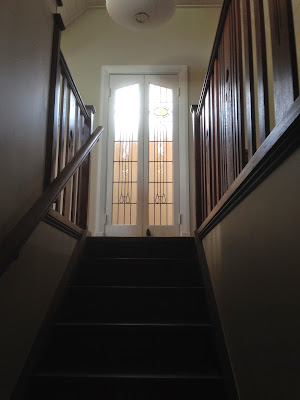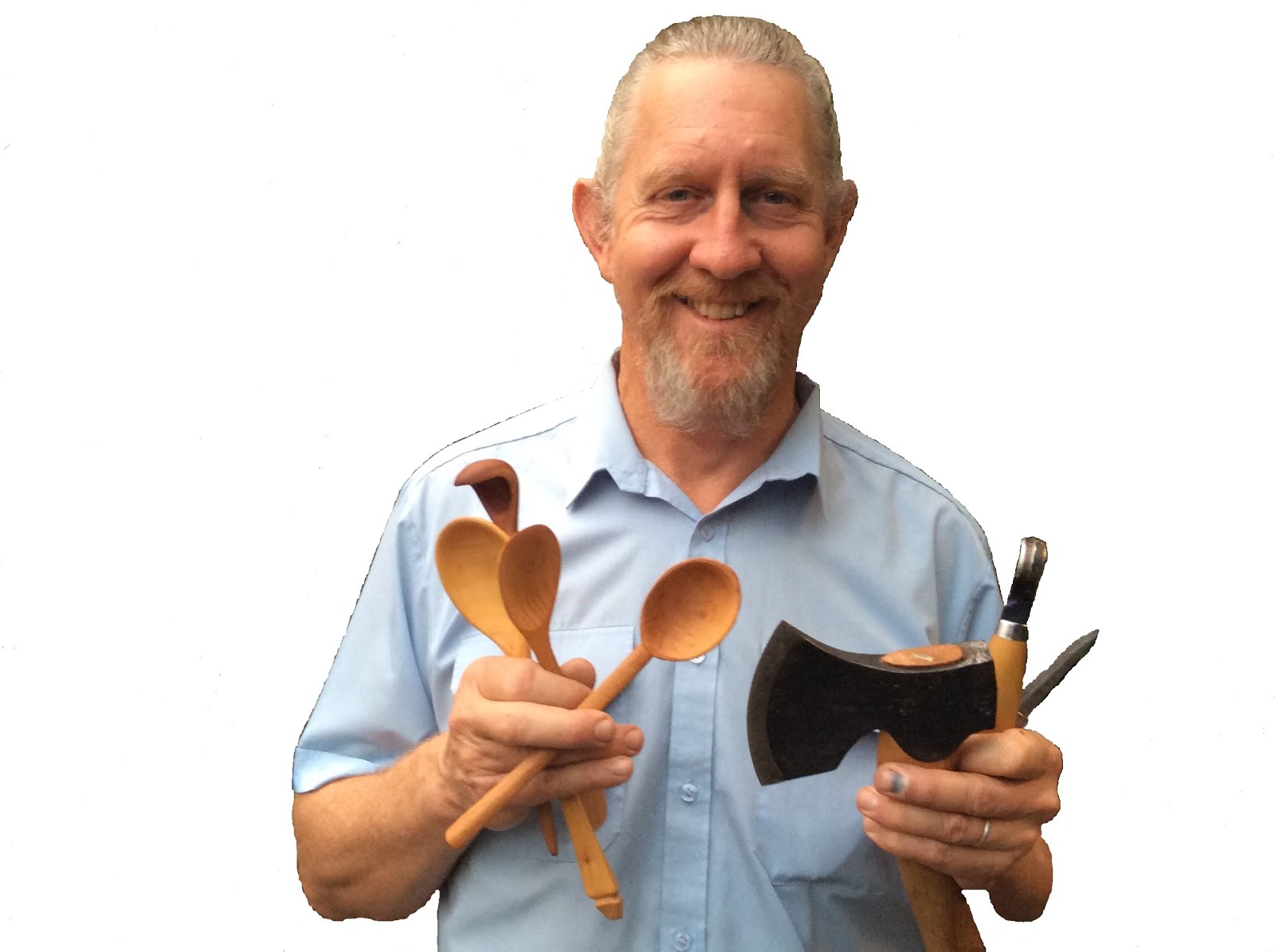I went on my Green Woodworking Odyssey to the USA in 2013, and since then have been sharing the joys of Green Woodworking with many people here in Perth, Western Australia. It is a different smorgasbord of timbers here to that traditionally used in Europe and North America. '
 |
| Riving a piece of Black Birch into section for spoon carving, at Drew Langsners, NC, USA. |
 |
| Çape Lilac (White Cedar) after the tree loppers have done their thing... |
 |
| Breaking down the log sections, to make them more manageable. |
 |
| A nice load of fresh very green timber, from a Cape Lilac tree which was being removed. |
 |
| Each tree coming down offers so much material - lets use it rather than just chip it! |
Enter the wonders and opportunities of Green Woodworking.
While extolling the delights of this ancient and often pre-industrial techniques, knowledge, tools and skills, I have been spruiking the benefits of people experiencing this range of traditional woodcrafts together. However the tools are often hard to find in Australia. We have to get them in from the Northern Hemisphere. The interest grows, but it is hard for beginners to take up these crafts with difficult access to the gear. So the woodworking supplier Timbecon offered to take me to the Timber & Working with Wood Shows in Brisbane, Sydney, Melbourne, Canberra and Perth this year, to demonstrate Green Woodworking and to check out the interest across the country.
BRISBANE, QUEENSLAND, 15-17 May 2015.
Hence last month I was at the Brisbane Wood Show, and shortly I will be at the Sydney Wood Show. Brisbane was a fantastic time, and it was great to meet many other spoon carvers, and to hear that spoon carving is growing rapidly in popularity over there, with a growing interest in green wood spoon carving and other aspects of green woodworking. It confirmed my understandings.
While in Brisbane, the following story was produced by QUT Media students. Check it out:
Thanks to the crew from QUT for making this little clip about the Brisbane Wood Show.
I had a great time, and it was exciting to find so much interest in green woodworking amid the crowd at the Brisbane Show, and to meet so many spoon carvers too.
SYDNEY, NEW SOUTH WALES, 12-14 June 2015.
My display at the Sydney Timber & Working With Wood Show evolved a step further, as I started to create a better look with a "Tool Wall".
| The start of the evolution of the traditional tool wall. |
| The Double Spring Pole Lathe has pride of place. It draws a crowd! |
| View from the other side - MK III Shaving Horse, chopping block and small bench. |
Once the doors were opened, it was all flat out, for three days. A great experience.
| Shaping a Lund Stool top in the Shaving Horse, using a drawer knife. |
Again, there was lots of interest shown in Green Woodworking - the stool bodging and spoon carving I was demonstrating. Good to meet more spoon carvers in the crowd.
| Cutting off the protruding leg ends on a small Lund Stool. A block plane with clean them off. |
MORE TO COME...
Next up I will be demonstrating Green Woodworking at:
the Perth Wood Show, 7-9 August,
the Melbourne Timber & Working with Wood Show, 11-13 September,
and the Canberra Timber & Working with Wood Show, 6-8 November.
Thanks to Ross Gobby of Timbecon for creating these fantastic opportunities for me.
Maybe I'll see you at one of the Shows?... Come and introduce yourself to me.
.jpg)




